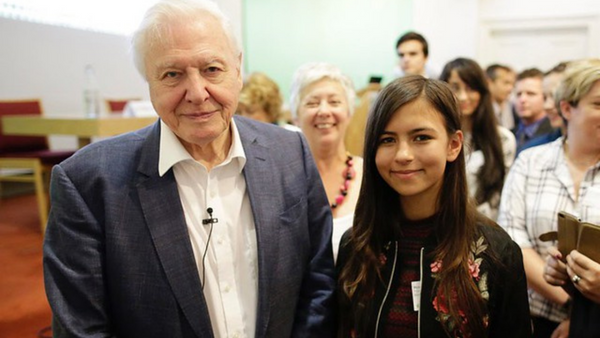For the next 18 months Nelson’s Ship in a Bottle by artist Yinka Shonibare is displayed on the 4th Plinth in Trafalgar Square. It’s worth a look because it’s such a visually striking sculpture; a souvenir ship with coloured sails that is rich with cultural potency.

For the next 18 months Nelson’s Ship in a Bottle by artist Yinka Shonibare is displayed on the 4th Plinth in Trafalgar Square. It’s worth a look because it’s such a visually striking sculpture; a souvenir ship with coloured sails that is rich with cultural potency.
In last week’s Tate talk on Debating Multiculturalism and the Arts, he explained that in the UK discussions of cultural diversity always contain references to the power relationship between ‘us’ and ‘them’. With this sculpture he set out to deliberately confuse these ingrained habits by being unclear about which ‘us’ or ‘them’ he was siding with. As Yinka Shonibare MBE phrased it, “I’m interested in exploring the idea of the Trojan Horse” - a very loaded gift.
The ambiguous gift is a valuable way to describe contemporary art. There are quite a lot of unspoken assumptions about how we think about things when we are given visual art to look at, and when art is in a public place these assumptions are more apparent. Contemporary visual art sets out to prompt our curiosity for long enough to get us thinking - thinking about what we think and why we think it - with the hope that the work is implicitly challenging enough for us to generate a fresh perspective on things. The variety of reviews and interpretations of Yinka’s 4th Plinth work demonstrate the importance of the each viewer’s subjective response fairly well, with different people giving different meanings to the work.
[quote]
Contemporary art thrives on being thoughtfully controversial. The 4th Plinth also raises issues of public funding of the arts and the policy strings that should/shouldn’t be attached to it. In the feisty Tate discussion the ‘us’ and ‘them’ issue also appeared through discussions of arts policy. As part of the panel discussion, Munira Mirza gave constructive insights into the negative consequences of positive discrimination in cultural policy, which drew dismayed “you can’t say that” responses from the entrenched liberal art crowd. (It's worthwhile listening to the discussion when it goes online).
The 4th plinth itself has attracted controversy since the mid-1800s and debates continue about who should be represented on the prominent site located between Nelsons’ Column and the National Gallery. In fact, the plinth stood empty for over 100 years until Prue Leith, then Chair of the RSA, had the idea that it should put to good social use and in 1995 proposed that it be used for contemporary sculpture. The first temporary sculpture of the RSA initiated project was unveiled in 1999 and there has been a series of 4th plinth commissions, on and off, since then.
Related articles
-
Mya-Rose Craig: Featured Fellow Q&A
Mya-Rose Craig
Mya-Rose Craig is a 20-year-old birdwatcher, environmentalist and activist, author and RSA Fellow. Read our conversation with her as part of our Featured Fellow Q&A series.
-
Open call: Creative collaboration and collective imagination research
Hannah Webster Ella Firebrace
Learn more about the UNBOXED: Collective Futures open call; inviting you to submit what you are doing to help shape better futures for people and planet.
-
UNBOXED: The importance of unlocking collective imagination
Joanna Choukeir
Find out about UNBOXED: Creativity in the UK, why its mission is so important, and what you can expect to see.



Be the first to write a comment
Comments
Please login to post a comment or reply
Don't have an account? Click here to register.